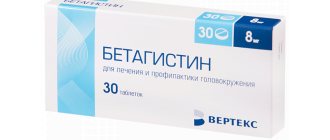Home | About us | Delivery | Advertisers | Login | Registration
Delivery on Sundays and holidays does not work!
- Medicines
- dietary supplementsVitamins
- Categories from A to Z
- Brands from A to Z
- Products from A to Z
- Medical equipment
- beauty
- Child
- Care
- Honey products appointments
- Herbs and herbal teas
- Medical nutrition
- Journey
- Making medicinesStock
Pharmacy online is the best pharmacy in Almaty, delivering medicines to Almaty. An online pharmacy or online pharmacy provides the following types of services: delivery of medicines, medicines to your home. Online pharmacy Almaty or online pharmacy Almaty delivers medicines to your home, as well as home delivery of medicines in Almaty.
my basket
Apteka84.kz is an online pharmacy that offers its customers medicines, medicinal and decorative cosmetics, dietary supplements, vitamins, baby food, intimate products for adults, medical equipment and thousands of other medical and cosmetic products at low prices. All data presented on the Apteka84.kz website is for informational purposes only and is not a substitute for professional medical care. Apteka84.kz strongly recommends that you carefully read the instructions for use contained in each package of medicines and other products. If you currently have any symptoms of the disease, you should seek help from a doctor. You should always tell your doctor or pharmacist about all the medicines you take. If you feel you need further help, please consult your local pharmacist or contact our GP online or by telephone.
© 2021 Pharmacy 84.
Sumamed forte suspension 200 mg/5 ml 37.5 ml (35.573 g) (Teva)
In case of missing one dose of the drug, the missed dose should be taken as early as possible, and subsequent doses should be taken at intervals of 24 hours. Sumamed® forte should be used with caution in patients with impaired liver function, due to the possibility of developing fulminant hepatitis and severe liver failure . If there are symptoms of impaired liver function, such as rapidly increasing asthenia, jaundice, darkening of urine, tendency to bleeding, hepatic encephalopathy, therapy with Sumamed® forte should be stopped and a study of the functional state of the liver should be carried out. For moderate impairment of renal function (creatinine clearance >40 ml/min ) therapy with Sumamed® forte should be carried out with caution under monitoring the state of renal function. For end-stage renal failure (CK), it must be remembered that for the prevention of pharyngitis/tonsillitis caused by Streptococcus pyogenes, as well as for the prevention of acute rheumatic fever, the drug of choice is usually penicillin. As with the use of other antibacterial drugs, during therapy with Sumamed® forte, patients should be regularly examined for the presence of non-susceptible microorganisms and signs of the development of superinfections, including fungal ones.The drug Sumamed® forte should not be used in longer courses than indicated in the instructions, because the pharmacokinetic properties of azithromycin allow us to recommend a short and convenient dosage regimen. There is no data on a possible interaction between azithromycin and ergotamine and dihydroergotamine derivatives, but due to the development of ergotism with the simultaneous use of macrolides with ergotamine and dihydroergotamine derivatives, this combination is contraindicated. With long-term use of the drug Sumamed® forte the development of pseudomembranous colitis caused by Clostridium difficile is possible, both in the form of mild diarrhea and severe colitis. If diarrhea develops while taking azithromycin, as well as 2 months after the end of therapy, pseudomembranous colitis caused by Clostridium difficile should be excluded. Slow ventricular repolarization syndrome - long QT interval syndrome - increases the risk of developing arrhythmias, incl. ari while taking macrolides, as well as the drug Sumamed® forte. Caution is required when using azithromycin in patients with prolongation of the QT interval, receiving therapy with antiarrhythmic drugs of classes IA, III, cisapride, with hypokalemia or hypomagnesemia, clinically significant bradycardia, arrhythmia, or severe heart failure. The use of Sumamed® forte may provoke the development of myasthenic syndrome or cause an exacerbation of myasthenia gravis. When using Sumamed® forte in patients with diabetes mellitus, as well as when following a low-calorie diet, it is necessary to take into account that the suspension contains sucrose (0.32 XE/5 ml). Effect on the ability to drive vehicles and operate machinery. With the development of undesirable effects on the nervous system and organ of vision, patients should be careful when performing actions that require increased concentration and speed of psychomotor reactions.
Sumamed powder for the preparation of suspension for oral administration 100 mg/5 ml bottle 20 ml in Moscow
Sumamed®
Capsules:
hard, gelatinous, size No. 1. The color of the body is blue, the lid is blue. Capsule contents: powder or compacted mass from white to light yellow, disintegrating when pressed.
Film-coated tablets:
blue, round (125 mg) or oval (500 mg), biconvex with “PLIVA” engraved on one side and “125” or “500” on the other. The fractured appearance is white to almost white.
Powder for the preparation of suspension for oral administration:
granular powder from white to light yellow in color with a characteristic odor of cherry and banana. After dissolution in water, it becomes a homogeneous suspension from white to light yellow in color with a characteristic odor of cherry and banana.
Lyophilisate for preparing solution for infusion:
lyophilized powder of white or almost white color.
Sumamed® forte
Powder for the preparation of suspension for oral administration:
granular powder from white to light yellow in color with a characteristic odor of cherry and banana. After dissolution in water, it becomes a homogeneous suspension from white to light yellow in color with a characteristic odor of cherry and banana.
After oral administration, azithromycin is well absorbed and quickly distributed in the body. After a single oral dose of 500 mg, bioavailability is 37% (first pass effect), Cmax (0.4 mg/ml) in the blood plasma is created after 2–3 hours, apparent Vd is 31.1 l/kg. Plasma protein binding is inversely proportional to blood concentration and ranges from 7–50%. Penetrates through cell membranes (effective against infections caused by intracellular pathogens). Transported by phagocytes, polymorphonuclear leukocytes and macrophages to the site of infection, where it is released in the presence of bacteria. Easily passes through histohematic barriers and enters tissues. The concentration in tissues and cells is 50 times higher than in blood plasma, and at the site of infection it is 24–34% higher than in healthy tissues.
Azithromycin has a long T1/2 - 35–50 hours. T1/2 from tissues is much longer. Therapeutic concentrations of azithromycin are maintained for up to 5–7 days after the last dose. Azithromycin is excreted mainly unchanged - 50% through the intestines, 6% by the kidneys. In the liver it is demethylated, losing activity.
In patients with severe renal failure (Cl creatinine <10 ml/min), T1/2 of azithromycin increases by 33%.
The pharmacokinetics of azithromycin in healthy volunteers after a single intravenous infusion lasting more than 2 hours at a dose of 1000–4000 mg (solution concentration 1 mg/ml) has a linear relationship and is proportional to the administered dose. T1/2 of the drug is 65–72 hours. The high level of observed Vd (33.3 l/kg) and plasma clearance (10.2 ml/min/kg) suggests that the long T1/2 of the drug is a consequence of the accumulation of the antibiotic in tissues followed by its slow release.
In healthy volunteers, with an intravenous infusion of azithromycin at a dose of 500 mg (solution concentration 1 mg/ml) for 3 hours, the Cmax of the drug in the blood serum was 1.14 μg/ml. The minimum serum level (0.18 μg/ml) was observed over 24 hours and the AUC was 8.03 μg·h/ml. Similar pharmacokinetic values were obtained in patients with community-acquired pneumonia who were prescribed intravenous infusions (3 hours) for 2 to 5 days.
After daily administration of azithromycin at a dose of 500 mg (infusion duration - 1 hour) for 5 days, an average of 14% of the dose is excreted in the urine over a 24-hour dosing interval.
Azithromycin is a broad-spectrum bacteriostatic antibiotic from the macrolide-azalide group. Has a wide spectrum of antimicrobial action. The mechanism of action of azithromycin is associated with the suppression of protein synthesis in microbial cells. By binding to the 50S ribosomal subunit, it inhibits peptide translocase at the translation stage and suppresses protein synthesis, slowing down the growth and reproduction of bacteria. In high concentrations it has a bactericidal effect.
It is active against a number of gram-positive, gram-negative, anaerobic, intracellular and other microorganisms.
Sensitive microorganisms:
aerobic gram-positive microorganisms -
Staphylococcus aureus
(methicillin-sensitive strains),
Streptococcus pneumoniae
(penicillin-sensitive strains),
Streptococcus pyogenes
;
aerobic gram-negative microorganisms - Haemophilus influenzae
,
Haemophilus parainfluenzae
,
Legionella pneumophila
,
Moraxella catarrhalis
,
Pasteurella multocida
,
Neisseria gonorrhoeae
;
anaerobic microorganisms - Clostridium perfringens
,
Fusobacterium spp.
,
Prevotella spp.
,
Porphyriomonas spp.
;
other microorganisms - Chlamydia trachomatis
,
Chlamydia pneumoniae
,
Chlamydia psittaci
,
Mycoplasma pneumoniae
,
Mycoplasma hominis
,
Borrelia burgdorferi
.
Microorganisms with acquired resistance to azithromycin
: aerobic gram-positive microorganisms -
Streptococcus pneumoniae
(penicillin-resistant strains and strains with average sensitivity to penicillin).
Microorganisms with natural resistance
: aerobic gram-positive microorganisms -
Enterococcus faecalis
,
Staphylococcus aureus
(methicillin-resistant strains),
Staphylococcus epidermidis
(methicillin-resistant strains), anaerobic microorganisms -
Bacteroides fragilis
.
Cases of cross-resistance between Streptococcus pneumoniae
,
Streptococcus pyogenes
(group A beta-hemolytic streptococcus),
Enterococcus faecalis
and
Staphylococcus aureus
(methicillin-resistant strains) to erythromycin, azithromycin, other macrolides and lincosamides.
Scale of sensitivity of microorganisms to azithromycin (minimum inhibitory concentration - MIC)
| Microorganisms | MIC, mg/l* | |
| Sensitive | Sustainable | |
| Staphylococcus | ≤1 | >2 |
| Streptococcus A, B, C, G | ≤0,25 | >0,5 |
| Streptococcus pneumoniae | ≤0,25 | >0,5 |
| Haemophilus influenzae | ≤0,12 | >4 |
| Moraxella catarrhalis | ≤0,5 | >0,5 |
| Neisseria gonorrhoeae | ≤0,25 | >0,5 |
* Azithromycin has not been used to treat infections caused by Salmonella typhi
(MIC ≤16 mg/L) and
Shigella spp.
If you miss one dose of Sumamed®, the missed dose should be taken as early as possible, and subsequent doses should be taken at intervals of 24 hours.
The drug Sumamed® should be used with caution in patients with moderate liver dysfunction due to the possibility of developing fulminant hepatitis and severe liver failure. If there are symptoms of impaired liver function, such as rapidly increasing asthenia, jaundice, darkening of urine, tendency to bleeding, hepatic encephalopathy, therapy with Sumamed® should be stopped and a study of the functional state of the liver should be performed.
In case of moderate renal dysfunction (Cl creatinine >40 ml/min), therapy with Sumamed® should be carried out with caution, under monitoring the state of renal function. In end-stage renal failure (Cl creatinine <10 ml/min), there is an increase in the concentration of azithromycin in the blood plasma by 33%.
It must be remembered that to prevent pharyngitis/tonsillitis caused by Streptococcus pyogenes
, as well as for the prevention of acute rheumatic fever, the drug of choice is usually penicillin.
As with the use of other antibacterial drugs, during therapy with Sumamed®, patients should be regularly examined for the presence of non-susceptible microorganisms and signs of the development of superinfections, incl. fungal.
The drug Sumamed® should not be used for longer courses than indicated in the instructions, because The pharmacokinetic properties of azithromycin allow us to recommend a short and convenient dosage regimen.
There is no data on a possible interaction between azithromycin and ergotamine and dihydroergotamine derivatives, but due to the development of ergotism with the simultaneous use of macrolides with ergotamine and dihydroergotamine derivatives, this combination is contraindicated.
With long-term use of the drug Sumamed®, the development of pseudomembranous colitis caused by Clostridium difficile
, both in the form of mild diarrhea and severe colitis. If diarrhea develops while taking azithromycin, as well as 2 months after the end of therapy, clostridial pseudomembranous colitis should be excluded.
Slow ventricular repolarization syndrome - QT interval prolongation syndrome - increases the risk of developing arrhythmias (including arrhythmias) while taking macrolides, as well as the drug Sumamed®. Caution when using azithromycin should be observed in patients with prolongation of the QT interval, receiving therapy with class IA, III antiarrhythmic drugs, cisapride, hypokalemia or hypomagnesemia, clinically significant bradycardia, arrhythmia or severe heart failure.
The use of Sumamed® may provoke the development of myasthenic syndrome or cause an exacerbation of myasthenia.
When using Sumamed® and Sumamed® forte in powder form to prepare a suspension for oral administration in patients with diabetes mellitus, as well as on a low-calorie diet, it is necessary to take into account that the suspension contains sucrose (0.32 XE/5 ml).
The effectiveness and safety of use in children under 18 years of age of the dosage form of the drug Sumamed®, intended for the preparation of a solution for infusion, has not been established.
Patients on a diet with limited sodium intake when treated with Sumamed® should take into account that one bottle contains 198.3 mg of sodium (sodium hydroxide is an excipient).
Impact on the ability to drive vehicles and engage in other potentially hazardous activities that require increased concentration and speed of psychomotor reactions.
If undesirable effects on the nervous system and organ of vision develop, caution should be exercised when performing actions that require increased concentration and speed of psychomotor reactions.



